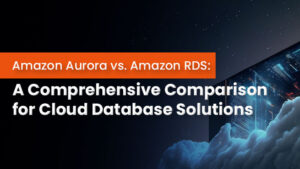
How to Apply Cybersecurity in Fintech for User Protection
Introduction As fintech evolves, it brings innovative financial solutions that enhance user convenience, such as mobile banking, digital lending, and secure payments. However, as financial
Exclusive Discount Offer: Unlock 3-Months of IPSpecialist’s Premium Plan for Just $59.99 $15.99! Save $44 Today! Subscribe Now!

Introduction As fintech evolves, it brings innovative financial solutions that enhance user convenience, such as mobile banking, digital lending, and secure payments. However, as financial

Introduction In the realm of cloud computing, Amazon Web Services (AWS) offers a variety of managed database options that help organizations scale, secure, and optimize

Introduction In the ever-evolving landscape of cybersecurity, zero-day attacks pose a significant threat to businesses and individuals alike. A zero-day attack exploits a software vulnerability
Table of Contents
A software-to-software interface is called an API (Application Programming Interface). It provides a standardized and safe means for apps to communicate with one another. It also aids in seamlessly delivering functionality to one another. However, SDK is the finest solution for monitoring possibilities for creating features or including functionality in an app. Several companies offer software development services and can give users a seamless experience with the best SDK use for the company. Let’s read this blog and look at the differences between SDK and API to better comprehend the notion of each.
Check out our Cloud Computing Courses now if you want to start your career in Cloud Computing.
Developers use an SDK (Software Development Kit) to create apps for a particular platform. It is a collection of instructions, instruments, and software. As the name implies, a Software Development Kit (SDK) is a unique toolkit. The SDKs contain code libraries, IDEs, APIs, code samples, documentation, and several additional tools. SDKs can boast a variety of strong functionality and features that lessen the difficulty of developing apps and software applications. There are circumstances in which an SDK is crucial. For example, to create an iOS-based app, the developer needs the iOS SDK.
The majority of the applications available today were made using various SDKs. According to a 2019 study, Android-based applications typically use 18.2 SDKs. Additionally, certain SDKs allow for integrating different software development tools and optimizing an application for a particular operating system or device.
SDKs are not just for web and mobile apps. Software developers also use them to create Internet of Things (IoT)-based solutions. This implies that the hardware vendor may develop an SDK if users purchase a set of solar panels. Additionally, the developer can program it to meet specific needs.
To construct web applications in the programming language of their choice, such as Ruby, Python, PHP, or JavaScript, programmers need SDKs.
A software development kit for each platform is necessary to create an application that runs on iOS and Android mobile devices.
These SDKs differ from open-source SDKs in several ways. Commercial or proprietary SDKs require a license, and programmers cannot alter their source code.
Various open-source SDKs available on the market are free to use, allowing programmers to alter them however they see fit. This has advantages that could aid in SDK customization but also pose security problems.
SDKs include in-built code expertise with thorough documentation. Therefore, the software development team does not require domain experts to address any issues.
Software Development Kit makes acquiring readymade components simple, allowing developers to speed up development. The software engineers can configure and deploy several location services for the application. Additionally, the SDK makes it simple to access parts and collects them in the application.
Software application developers can reuse code sequences with the use of SDKs. They may be able to accelerate the software development process. Finally, the development team has enough time to concentrate on pressing issues.
An SDK’s biggest drawback is its complexity. Reviewing SDK documentation and imagining what is possible might take a lot of time. A new SDK requires some time for developers to become familiar with it.
A basic set of commands known as an API allows an application to communicate with services provided by entities outside it. This indicates that using an API allows app developers to include specific functionalities in their apps and can hasten the development process.
Developers can run code on another system using the Remote Procedure Call API. RPC is an API that permits calling methods, unlike REST, where the client can only make data requests.
Web-based APIs include SOAP APIs. They can be used when it is necessary to improve data security and privacy. These APIs may effortlessly exchange data via web-based protocols, including SMTP, HTTP, TCP/IP, and others. As a result, REST API is a fairly straightforward architectural paradigm, whereas SOAP API is a collection of protocols.
The workflow of API can be better defined by splitting into:
Application Programming Interfaces benefit both seasoned app developers and regular app users. The APIs make it simple for developers to communicate with business stakeholders and update agency systems. They can do this by increasing the agency’s business potential.
The advantages of APIs are that they can enhance both the developer experience and the end-user experience. Let’s look at a few of those.
APIs give programmers the ability to speed up the software development process. The fundamental to API automation is that computers can manage work far more effectively than a manual task force. In essence, APIs let software development organizations adjust the workflow of their workforce all at once.
Experts can customize software thanks to APIs. This implies that a business can design a unique solution for a user.
Application programming interfaces provide the power to link various software programs together. The primary justification is that they improve the overall performance of the product or application.
The content that has been developed can be shared and spread across many channels with the aid of web API access.
Like any technology, APIs also have drawbacks:
For developers and engineers, inadequate API documentation is a hassle. The team will have to spend more time testing if the API’s operation is unclear.
Some hackers find popular APIs to be an appealing target due to the volume of data they hold. The risk to the organization’s security may rise if the API provider makes insufficient investments in IT security defense. Some API providers do not go into great detail about ensuring that current IT security measures are in place.
SDKs and APIs are becoming essential components of contemporary software development. By providing the required tools to construct applications while exploiting the capabilities of the targeted platforms and services, SDKs and APIs attempt to simplify the development process in response to the ever-increasing complexity of development needs.
© 2024 All rights reserved | Privacy Policy | Terms and Conditions | Sitemap | Cookie Policy




